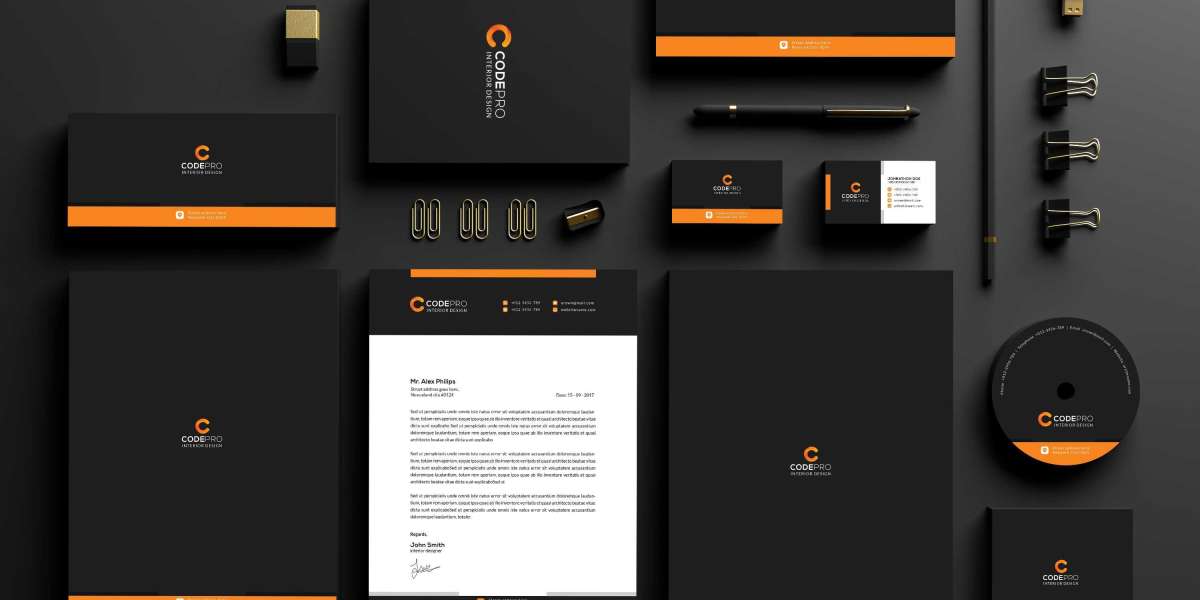A solid brand identity takes time to develop. You can't just pick a few colors and throw a logo together carelessly. To create an identity that accurately represents your company and can support you as you expand, you must approach brand design intelligently. Deep thought, a team with great design and communication abilities, and a thorough grasp of who you are, what you do, and how you want to portray your brand to the world are all required for this.
Even though this work is difficult, it is some of the most crucial that any brand can perform. You might as well do it correctly if you're going to do it. Developing a business identity may, of course, be scary and perplexing.
Branding Identity definition?
Your company's principles, the way you present your goods or services, and ultimately the impressions that your target market has of your brand are all combined to form your brand identity. It alludes to features that make it simple for customers to identify your company.Even though the terms "brand identity" and "branding" are occasionally used interchangeably, these are two distinct ideas. Simply put, "branding" is the process of deliberately influencing how customers perceive your company.
Creating Brand Identity which is impactful and unique?
Research
The research will be an important step in the process, as it is in most things in life. Researching your target customer, the competitors, and your company's mission, personality, voice, and values are all important steps in developing a distinctive branding and identity design.To effectively advertise a product or service to various target audiences, advertising must be flexible. You need to learn more about the needs of your target market for your type of business to be more successful with this phase. Although it may be tempting, your goal should never be to contact everyone because you might believe that doing so will benefit your business.
In addition to being beneficial for business, competitive research may help you establish a distinctive brand identity (with an emphasis on uniqueness). Focus on the ways you vary from your rivals because branding's purpose is to help you stand out. This activity will also assist you in avoiding branding tactics that failed to benefit your rivals.
It is not sufficient to understand the goods and/or services your company provides. A mission statement that outlines the objective, core principles, and future direction of your company is also necessary. Businesses with strong brand identities are aware of their target market and themselves very well.You could want to perform a SWOT Analysis to aid you in your research. In other words, spend some time figuring out your advantages, disadvantages, chances, and threats. Although it may seem laborious and difficult at this point, everything else depends on this process.
Construct your digital design assets
The tangible pieces of your digital design assets are what will serve to form how other people view your brand. They consist of the following:
Logo
One of the key components of a brand identity designis its logo, which serves as an instantly recognizable visual representation of the business. Therefore, a good logo should be straightforward, distinctive, pertinent, and adaptable enough to be used in a variety of mediums.
Color Palette
Color is just as crucial as the logo in terms of forging emotional connections. As the main visual component that consumers will connect with the brand, it is crucial to develop a powerful and enduring identity.A strong color scheme should be chosen intentionally and consistently to provide a stunning and cohesive appearance. It also helps to establish the personality and mood of a business.
Typography
The art of using type to convey meaning and aesthetics is known as typography. As it helps set the tone and provide a consistent appearance and feel, it is crucial for developing an appealing brand identityThe typography you choose can make a difference. The typeface should be simple to read, reflect the character of the brand, and blend well with the identity's overall appearance and feel.
Voice Quality
The tone of voice will aid in establishing client expectations and establishing businesses as authorities in their field. Additionally, it gives a brand an additional personality dimension that might aid in forging a bond with its target market.Depending on the brand and industry, the voice will change. To make sure that clients understand what to anticipate from the business, it should still always be consistent.
Messaging
You must develop a distinctive value proposition to determine effective communications. It ought to be customized for the intended audience of the business and ought to emphasize advantages over disadvantages. It involves explaining to customers why they should select your brand over rivals. It should be simple, straightforward, and in line with the ideals of your audience.
Positioning
Effective positioning is required for a strong brand identity. To build trust and loyalty with your audience, it's crucial to define how people should view your brand and remain true to it.
Execution
The brand identity must be applied accurately and consistently across all channels to achieve a unified appearance and feel. This is what is meant by execution. This entails making sure that every touchpoint, including packaging, internet presence, and signage, reflects the identity of the brand.
Keep an eye on your brand image
Recall how I mentioned that a brand identity is carefully developed. This phase now discusses that. You must do more than just develop a brand identity and evaluate your efforts.Instead, brand identity and design that attracts customers is a continuous process that calls for paying attention to what your audience thinks of your identity. You may discover how well your brand personality appeals to your target market and what you can change to strengthen your brand identity in this way.
Customer feedback, social media conversations, brand mentions, and remarks about what others are saying behind your back are some performance measures to monitor. Consider working on it if you discover something that lots of people are always discussing.
Maintain consistency with your brand identity
Most of the laborious work has already been done by you. Your responsibility going forward is to market your brand identity. How? Publish your logo. Create all marketing pieces with the typefaces, colors, and design features of your company. The infographics you create ought to be consistent with your brand. At the same time, be sure to adhere to your core values and brand messaging and communicate with your audience in line with your distinctive brand voice.
Making a brand style guide to share with your team is a good method to keep branding consistent. Additionally, you can design templates that tell your staff about your target clientele, your voice, your principles, and your value offer. For each of these, different templates can always be made. Alternatively, you might compile these into an infographic.
The nice part is that all of these templates and infographics can be created quickly. Making branding templates only takes a few minutes with the selection of infographic templates that JanBask Digital Design provides.
Do you need yet another piece of advice to maintain your brand 24/7? Establish a brand kit.
You can develop a brand kit usingJanBask Digital Design as your design tool, which will save all of your visual brand information, such as fonts, logos, color schemes, and more.
Conclusion:
Consumers continue to form an impression of your goods or service even after your business has closed that deal. The good news is that by taking the effort to develop a strong and distinctive brand identity, you do have a lot of control over that perception.
Your target audience will find it simpler to relate to your company if you use all the various physical components regularly. Every effort should be taken to maintain the style and brand voice, from choosing the right images to producing top-notch content.



